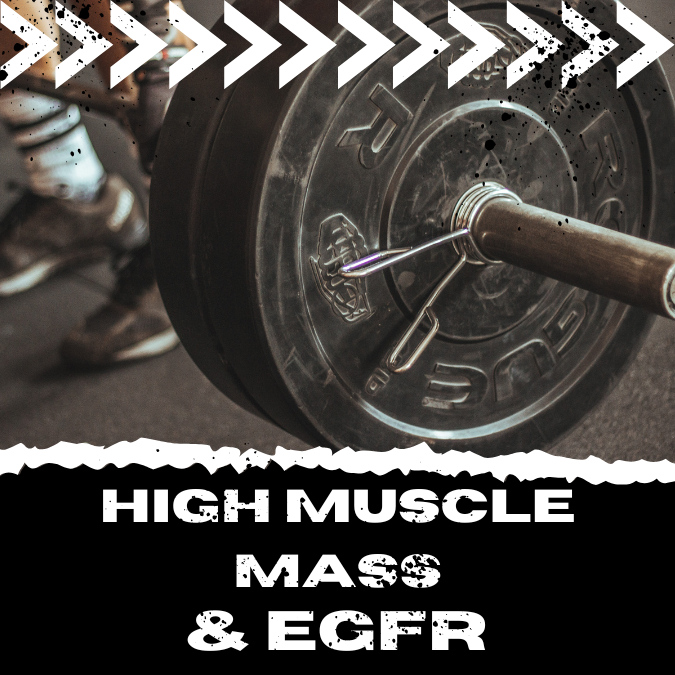This is part of my Low eGFR in Athletes Series. In my previous post, I reviewed an article, where the authors reported that Cystatin C isn’t impacted by muscle mass. But is that true in all cases?
Interesting, it appears that this statement maybe oversimplified. When I looked at the reference used by this article for this statement, I found my way to this article:
What is cystatin C and what factors impact it?
If you need a bit of background on Cystatin C – refer to my previous post here.
By as a quick refresher, cystatin C is produced by all nucleated cells in the body. Cystatin C levels will be impacted by:
- Inflammation
- Smoking
- Thyroid abnormalities
- fat mass
What is known about muscle mass and cystatin C?
In a previous post, I discussed how creatinine/cystatin C can be used as a marker of muscle mass. So it is well known that there is a relationship between cystatin C levels, creatinine and muscle mass.
Does data confirm that muscle mass doesn’t impact eGFR calculations with Cystatin-C?
According to Inker et al, clinicians must use caution when interpreting eGFR, even when cystatin C is used. Inker states that almost 20 years ago when cystatin C was first considered a possible alternative to creatinine, the community was hopeful that this marker would help remove some uncertainty when it came to factors such as muscle mass.
However, data has found that in people with muscle wasting the performance of eGFR calculated with cystatin C vs creatinine hasn’t shown consistent improvements. This suggests that Cystatin-C isn’t the perfect solution.
Have other studies reported this same concern?
Despite a fair bit of digging, I have to admit that data on this topic is scarce. However, I came across this 2021 abstract, which explicitly compared eGFR calculations using Creatinine vs Cystatin C in athletes. And, the authors state:
“Serum creatinine levels were significantly correlated with serum cystatin C levels. Consistent with this, eGFRcre was significantly correlated with eGFRcys. This suggests that muscle mass influences the assessment of renal function in athletes when cystatin C is used as a marker.”
Unfortunately, this was just an abstract as opposed to a full article, so I don’t have more details to understand which equations were used and if an eGFR calculated with BOTH creatinine and cystatin C did better.
Take Aways
While there has been interest in Cystatin C as an alternative measure of kidney function that won’t be impacted by muscle mass, evidence to date suggests that eGFR calculations using Cystatin C may not improve estimates to the level of precision previously hoped for.
Or, in a nut shell, use caution when interpreting eGFRcys for your patients.



